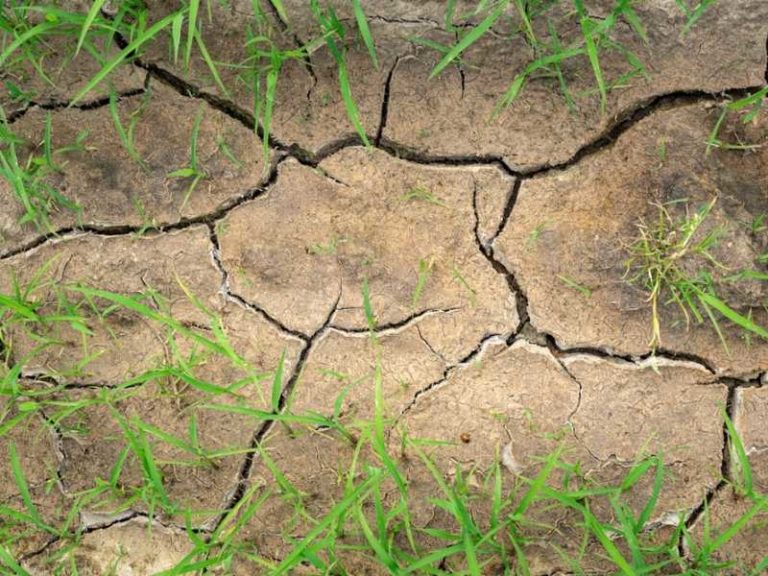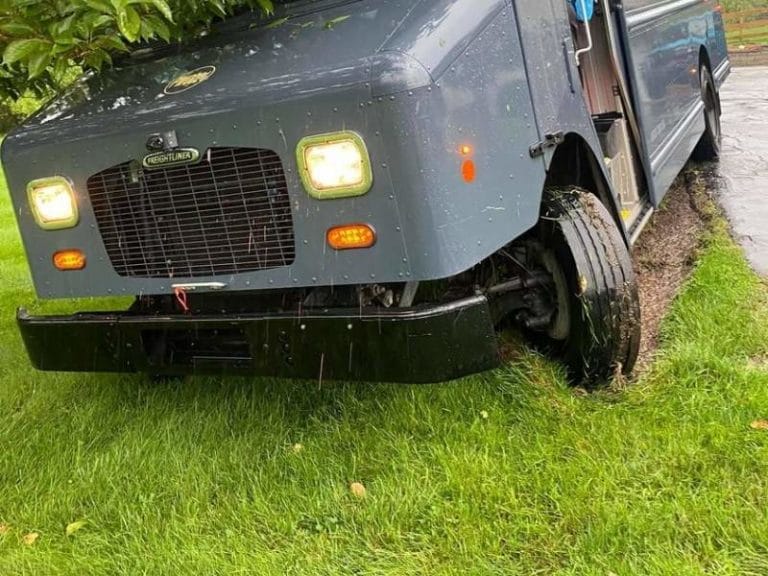How to Reseed a Dead Lawn
There are a few reasons you would want to reseed a dead lawn or fix a dead spot of grass. Weeds could overcrowd healthy grass. Seasonal changes could kill your grass. Therefore, reseeding your lawn becomes your best option for a thriving new lawn.
Successful and effective reseeding starts with removing the layer of dead grass covering the lawn soil. Spread the new seed, cover it with about ⅛ inches of soil, and keep the ground moist. Monitor the progress until the seedlings emerge.
Can you seed over dead grass?
You can seed over dead grass on your current lawn. Usually, seeding over dead grass is done in preparation for when the old grass thins out. However, the germination chances might be lower than seeding on a lawn where dead grass has been removed.
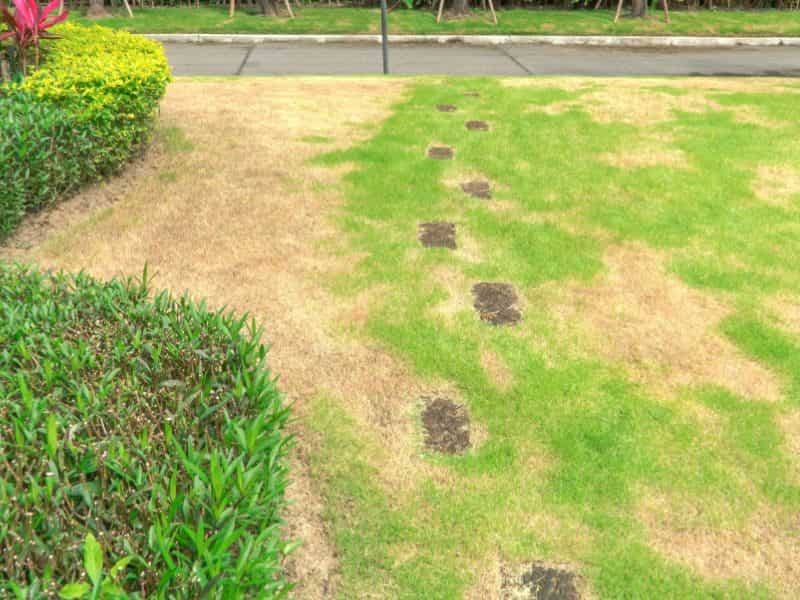
Some seeds won’t reach the soil when you overseed without prior lawn preparation. While many of these seeds will not germinate, those sprouting on the thatch will have poorly anchored shallow roots. Consequently, they will be unlikely to survive.
Overseeding a lawn while there’s still some dead grass also reduces the efficacy of any starter fertilizer applied to boost seed germination and seedling development. Granular fertilizer, especially, won’t effectively penetrate the soil due to the dead grass thatch barrier.
Due to the disadvantages of leaving dead grass on the lawn while reseeding, it’s better to dispose of the dead grass or add it to a compost bin. You can use the compost as lawn fertilizer after a few months.
Note: Reseeding directly over dead grass is only recommended if the amount of dead grass is minimal. However, if the thatch layer of dead grass exceeds 0.5 inches, it’s best to rake out the dead grass first before overseeding the lawn.
How to reseed a dead lawn
The proper way to reseed a lawn is by removing the dead grass and amending the soil before sprinkling the new seeds. Avoid planting the new seed directly on top of dead grass thatching.
To reseed a lawn after prepping it, follow the steps below to enhance your chances of success.
1. Pick a grass seed species appropriate for your lawn’s conditions and the weather in your region. You can stick to the grass species that are thinning or dying out. Alternatively, you can overseed with a different type of grass to increase your turf’s resilience.
For instance, if your lawn has shaded areas, choosing a shade-tolerant turfgrass variety such as Bermuda grass or bentgrass is best.
2. Pick the most appropriate time of the year to reseed your dead lawn. Usually, it’s in the early fall. During this time of the year, weeds that have taken over your turf won’t be so vigorous that they’ll hinder seedling growth.
Also, the temperatures will have dropped to a level that allows the soil to retain enough moisture for germination. Meanwhile, the soil remains warm in early fall to facilitate grass seed germination.
3. Sow the grass seed using a seed spreader to ensure even dispersion. The amount of seed you use when overseeding should be about half as much as the amount you would use if seeding the same lawn from scratch. However, if you hadn’t removed the dead grass layer before sowing, ensure you sow more grass seed than you need, as the dead grass layer will hinder a significant amount of the seeds from germinating.
4. With every pass, allow a slight overlap in the path of the spreader to ensure that no spots are left unseeded.
5. After sowing the seeds, cover the seeds to prevent birds from feeding on them. Covering the seeds also conserves soil moisture.
On a bare lawn, you can use straw or mulch topdressing. However, on a thin lawn with some live grass, the best way to cover the grass seeds is by running through the lawn with a metal-tined rake. The rake will lightly shift the topsoil, covering most of the grass seeds.
6. After sowing the seeds, add starter fertilizer if you hadn’t before reseeding. Starter fertilizer is rich in phosphorus, an essential nutrient for seed germination. Follow the manufacturer’s recommendations on fertilizer application to avoid applying too much and causing fertilizer burn.
7. Finally, ensure you deeply water the lawn. Moisture encourages deeper root growth and development. Different grass seeds have different water requirements. Check the brand guidelines to know how much water your newly-sown grass seed needs daily.
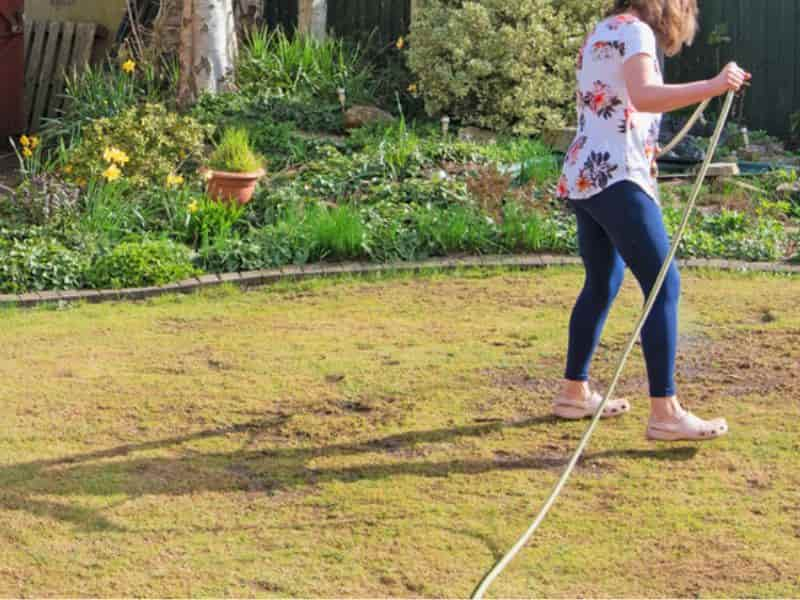
How do you prepare a dead lawn for seeding?
Lawn preparation before reseeding is an unmissable step if you want to repair your dead lawn. This ensures that the new grass seeds grow under the best conditions, increasing the successful germination rate. Crucial preparation steps include mowing, dethatching/scarification, and core aeration.
Mow the Lawn
Since reseeding is only recommended over complete renovation if the dieback problem is mild, consider mowing the remaining live grass at a low height. Low-height mowing allows more sunlight to reach the soil and kick-start germination for the seeds to be planted.
After mowing, remove the grass clippings to avoid thatch buildup. Alternatively, you can leave the grass clippings on the lawn to decompose and enrich the soil with nutrients. However, this approach means a longer wait time until you can reseed.
Scarify/Dethatch the Lawn
Scarification vs. dethatching removes dead grass and any other organic matter, forming a thatch layer on the surface of your lawn soil. Dead grass forms a barrier between the new grass seed and the soil. You improve seed contact with the soil by lightly raking your lawn to remove dead grass before reseeding. It enhances the chances of seed germination.
Note: Light scarification is best done after mowing, as it’ll be easier to reach the dead grass using your garden rake.
Aerate the Lawn
If you have compact lawn soil, it’s necessary to relieve the compaction. Aerating lawn allows new grass seeds to penetrate the soil quickly, creating spaces for moisture, oxygen, and seedling roots to pass through.
Tilling the soil is one of the best ways to relieve soil compaction. However, we’re looking to reseed the existing turf without removing it. Tilling implies a complete overhaul. Therefore, it’s out of the question.
Core aeration is a more practical approach. Use a core aerator to pull out plugs of soil from the lawn, creating more perforations in the soil. Core aeration is best done after dethatching or scarifying the lawn.
Should I rake dead grass before seeding
It’s important to rake dead grass before seeding to allow more air and water to reach the soil and facilitate germination. Removing dead grass by raking also allows direct soil contact between the new grass seeds and the soil. Complete contact between soil and seeds results in better rooting and healthy turf development.
Raking dead grass also allows you to see which areas of your dying turf have more bare patches than live grass. You can spread the grass seed accordingly, ensuring you sow more seeds in the bare areas.
Note: You can leave dead grass on your lawn and let it decompose. But this usually takes up to 2 months, which might be too long before you can reseed your yard.
Can you sprinkle grass seed on dead grass?
It’s not advisable to sprinkle grass seed on dead grass, as you’ll likely have minimal new growth. Instead, you should remove the dead grass first to allow for the following:
- Better seed-to-soil contact since no dead grass forms a barricade.
- Improved water, air, and sunlight penetration to boost seed germination and seedling development.
- Improved fertilizer penetration into the soil to boost root development and shoot growth.
- Better rooting of grass seedlings due to roots growing into the soil, not the dead grass thatch.
What Does Dead Grass Look Like?
Here are pictures of a dead grass lawn until its completely dry.
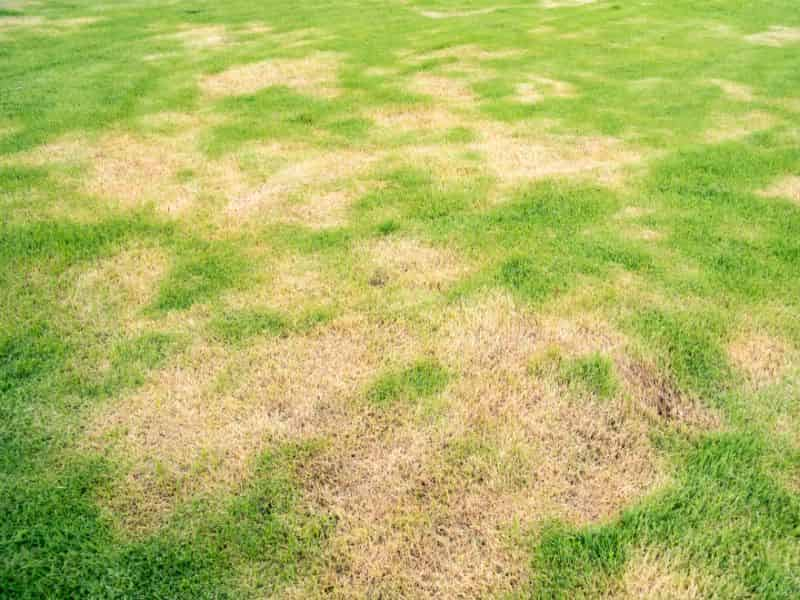
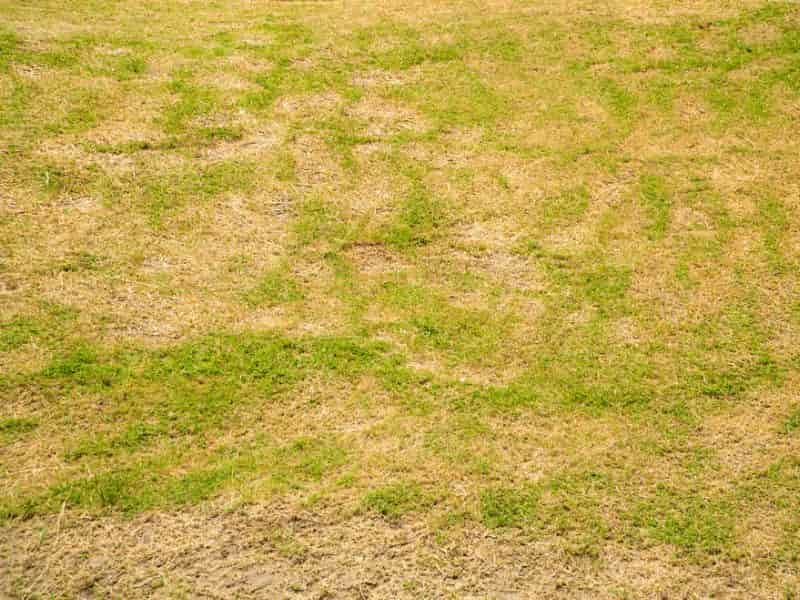
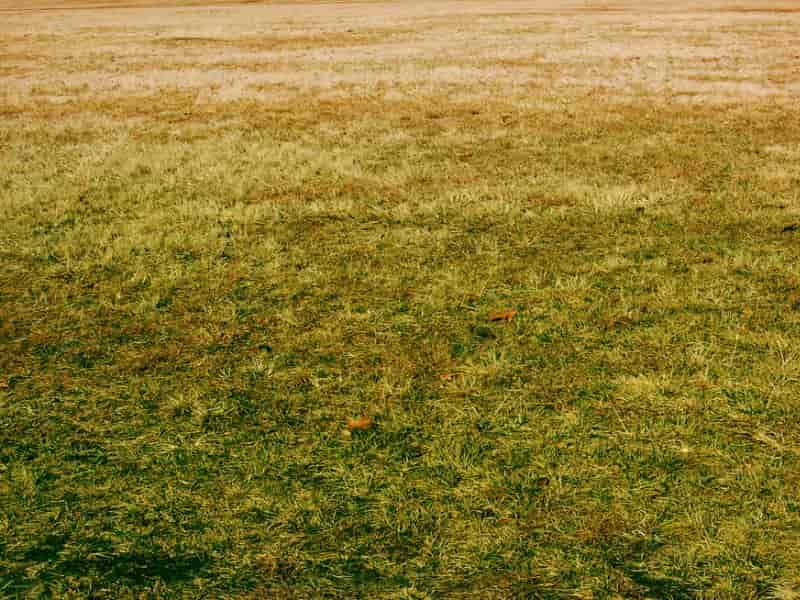
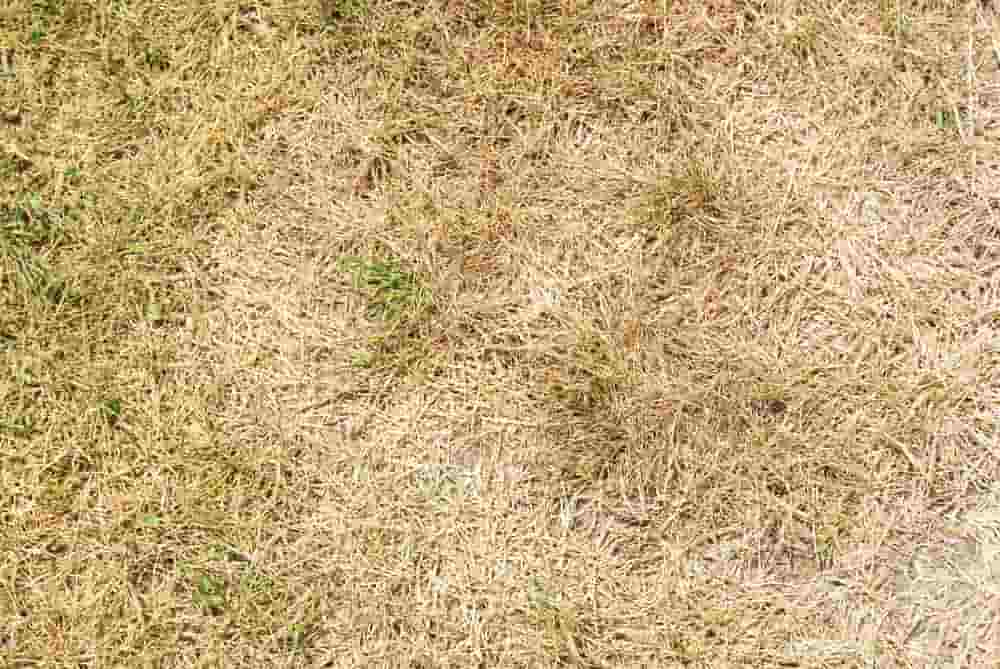
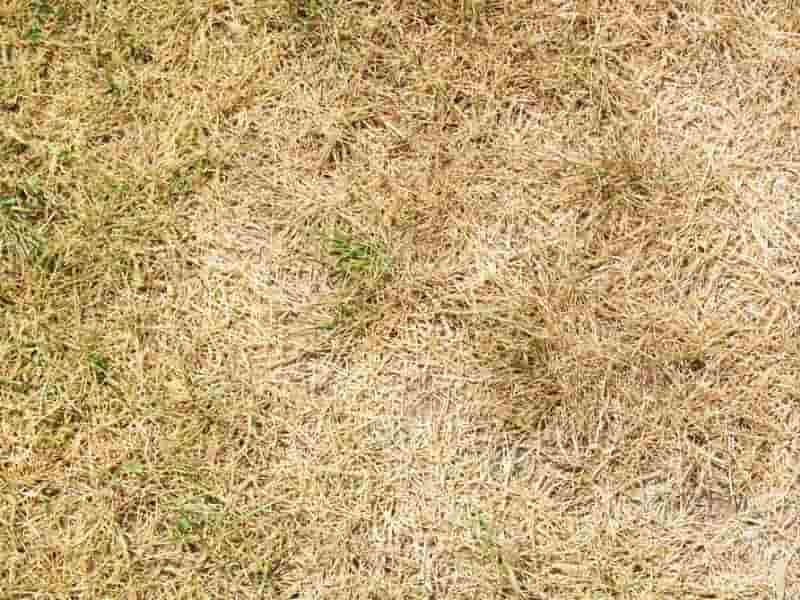
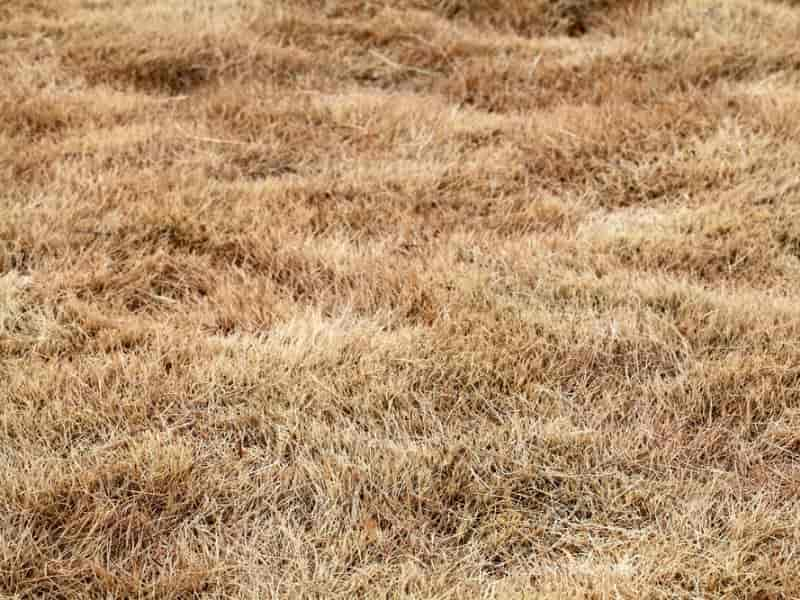
References
- Jessica Strickland, North Carolina State University (NCSU) Cooperative Extension: Dealing with Thatch in the Lawn
- Dwight Lingenfelter and Douglas Beegle, Pennsylvania State University (PSU) Extension: Starter Fertilizer

